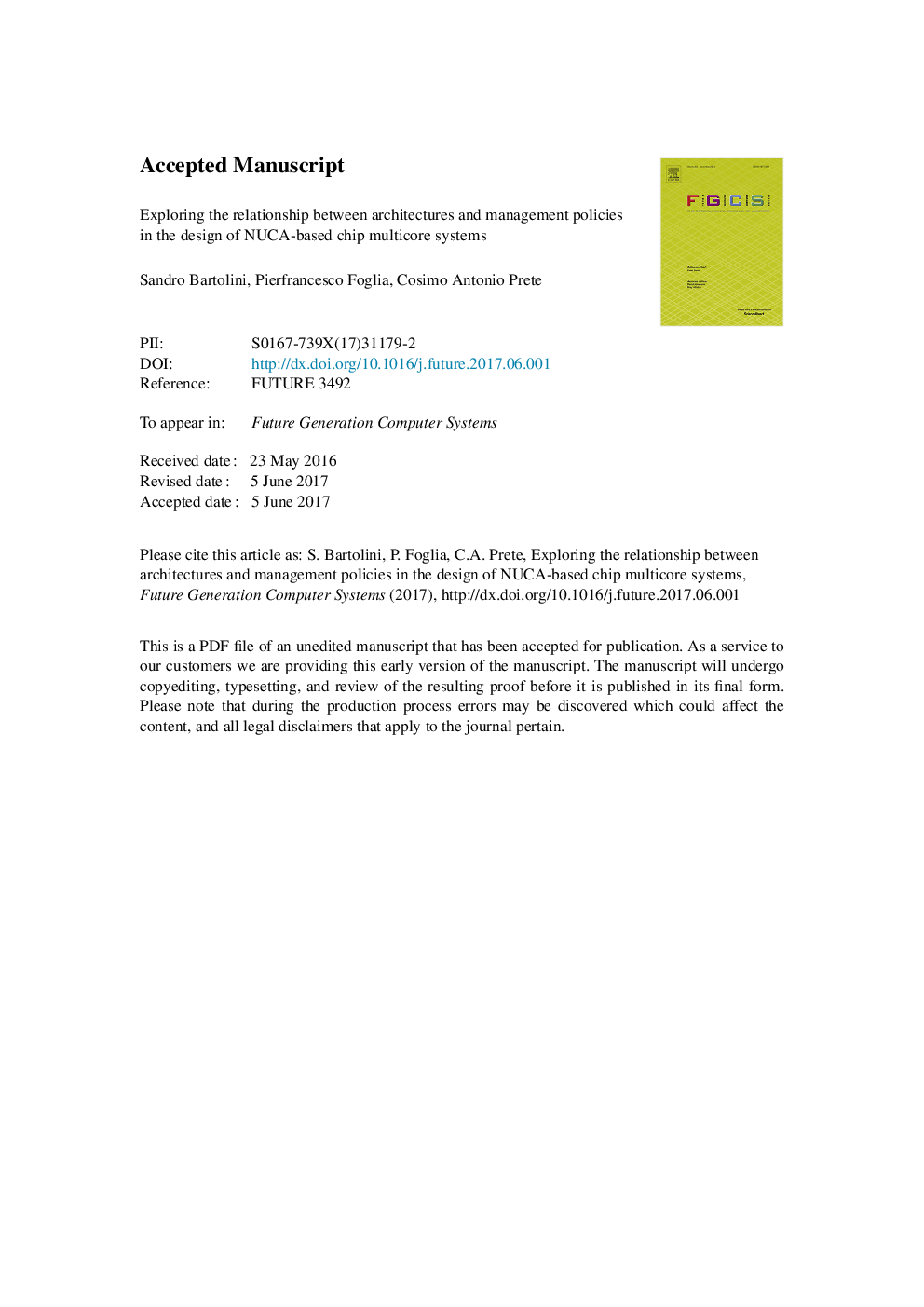| Article ID | Journal | Published Year | Pages | File Type |
|---|---|---|---|---|
| 4950187 | Future Generation Computer Systems | 2018 | 34 Pages |
Abstract
The last level on-chip cache (LLC) is becoming bigger and more complex to effectively support the various localities coming from multiple cores and threads running concurrently in modern processors. Furthermore, LLC design can be constrained by various restrictions that limit the freedom in their organization, for example in the relative positioning and clustering of processing cores and cache banks. Non Uniform Cache Architectures (NUCAs) offer a hierarchy of access times, which can be usefully exploited by the NUCA management policies (i.e. the ways in which data are either mapped to cache banks and/or moved among them upon access) to achieve high performance and low power consumption. The objective of the work is to single out the optimal combination of data management policies and cache-core layouts and to highlight which is the most performing one. With this aim, we compare two basic layouts for NUCA based systems, the first with cores connected to only one side of the shared NUCA cache (one-side), the second with half of the cores on one side and the others at the opposite side of the NUCA (two-sides). For all the configurations, we evaluate the effectiveness of both static and dynamic NUCAs and, where applicable, we consider also optimizations based on profile-guided bank remapping and replication of shared copies. As overall design guidelines, our results show that the one-side layout achieves the best performance and the lowest power consumption with the considered hw-sw optimizations. Then, similar results can be achieved in the two-sides layout only by introducing more sophisticated copy replications. Lastly, software based profile driven optimization allows the system to achieve the lowest usage of network resources.
Related Topics
Physical Sciences and Engineering
Computer Science
Computational Theory and Mathematics
Authors
Sandro Bartolini, Pierfrancesco Foglia, Cosimo Antonio Prete,
